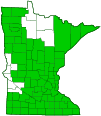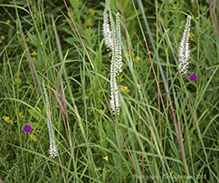Culver’s root
(Veronicastrum virginicum)
Conservation • Wetland • Description • Habitat • Ecology • Use • Distribution • Taxonomy
Description |
Culver’s root is a 32″ to 79″ tall, erect, perennial forb that rises from a taproot and creeping rhizomes. The stem is erect; green; round in cross section; and hairless or sparsely covered with soft, long or short hairs. It is unbranched below the middle and usually branched above the middle. The stem somewhat depends on nearby vegetation for support and, lacking any, may flop over, especially on slopes. The leaves appear in whorls of usually 4 or 5 but as few as 3 or as many as 7. They may be stalkless or on ⅛″ to ⅜″ long leaf stalks. The blade is lance-shaped to narrowly oblong, up to 4¾″ long, and up to ¾″ wide. It is tapered at the base and tapers to a point at the tip with concave sides along the tip. The upper surface is green and hairless. The lower surface is similar in color and is hairless to densely covered with long, soft, shaggy but unmatted hairs. The margins are finely toothed with sharp, forward pointing teeth. The inflorescence is a cluster of several spike-like, unbranched clusters (racemes) at the end of the stem and branches. The racemes are arranged like a candelabra, with an erect, long, central raceme and several lateral, shorter, ascending racemes, all rising from the same point at the end of the stem. Each raceme is densely flowered, 2″ to 6″ long, slender, and tapered. The flowers bloom from the bottom upward and the raceme elongates as the season progresses. The flowers are ¼″ to ⅜″ long. There are 4 sepals, 4 petals, 2 stamens, and 1 style. The sepals are green, lance-shaped, and hairless. They are united at the base into a very short calyx tube then separated at the tip into 2 long lips. The upper lip has 2 lobes that are longer than the 2 or 3 lobes of the lower lip. Though anatomically the calyx has 2 lips, the calyx lobes are separated almost to the base, giving the appearance of 4 or 5 distinct sepals. The petals are usually white, sometimes pinkish. They are fused at the base and for most of their length into a narrow corolla tube then separated at the tip into 2 lips. The upper lip has 1 rounded lobe. The lower lip has 2 lateral lobes and a lower lobe. All of the lobes are rounded and about 1 ⁄16″ long, much shorter than the tube. The stamens have white, up to ½″ long filaments and brown anthers. They extend well beyond the corolla tube. The style is white and has a minute, 1-lobed stigma at the tip. It extends beyond the corolla tube but is shorter than the stamens. The fruit is a narrowly egg-shaped, ⅛″ to 3 ⁄16″ long capsule with many seeds. It is round in cross section, not flattened. |
Height |
32″ to 79″ |
Flower Color |
White |
Similar Species |
| No similar species |
Habitat |
Moist to moderate moisture. Woods, prairies. Full or partial sun. |
Ecology |
Flowering |
June to September |
Pests and Diseases |
|
Use |
|
Distribution |
||
|
Sources |
|
| 5/17/2025 | ||
Nativity |
||
Native |
||
Occurrence |
||
Common |
||
Taxonomy |
|
Kingdom |
|
Division |
Tracheophyta (Vascular Plants) |
Subdivision |
Spermatophytina (Seed Plants) |
Class |
|
Order |
Lamiales (Mints, Plantains, Olives, and Allies) |
Family |
Plantaginaceae (plantain) |
Tribe |
Veroniceae |
Genus |
Veronicastrum (Culver’s roots) |
Section |
Veronicastrum |
Subordinate Taxa |
|
|
|
Synonyms |
|
Leptandra virginica Veronica virginica |
|
Common Names |
|
blackroot Bowman’s-root Culver’s-physic Culver’s root tall speedwell |
|
Glossary
Calyx
The group of outer floral leaves (sepals) below the petals, occasionally forming a tube.
Corolla
A collective name for all of the petals of a flower.
Filament
On plants: The thread-like stalk of a stamen which supports the anther. On Lepidoptera: One of a pair of long, thin, fleshy extensions extending from the thorax, and sometimes also from the abdomen, of a caterpillar.
Raceme
An unbranched, elongated inflorescence with stalked flowers. The flowers mature from the bottom up.
Rhizome
A horizontal, usually underground stem. It serves as a reproductive structure, producing roots below and shoots above at the nodes.
Visitor Photos |
||
Share your photo of this plant. |
||
This button not working for you? |
||
Alfredo Colon |
||
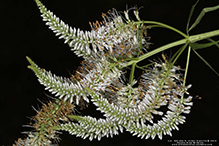 |
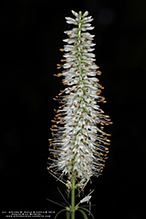 |
|
Dan W. Andree |
||
"Culver's Root" I believe these tall slender spire like flowers are called Culver's Root. |
||
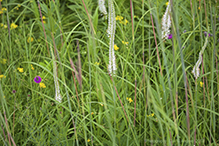 |
||
MinnesotaSeasons.com Photos |
||
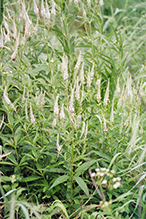 |
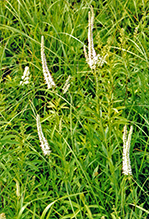 |
|
Plant |
Plant |
|
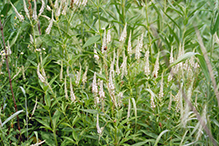 |
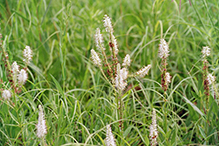 |
|
Plant |
Plant |
|
 |
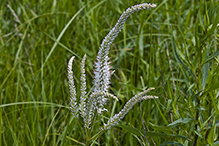 |
|
Inflorescence |
Inflorescence |
|
 |
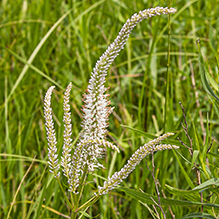 |
|
Inflorescence |
||
|
||
|
||
|
Inflorescence |
|
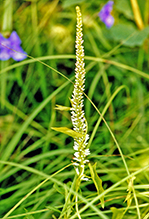 |
||
Inflorescence |
|
|
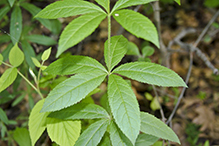 |
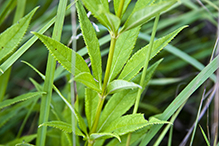 |
|
Leaves |
Leaves |
|
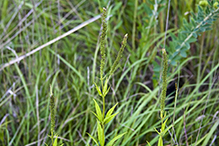 |
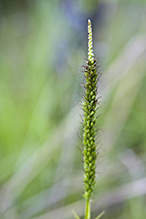 |
|
Infructescence |
||
|
||
|
||
|
Infructescence |
|
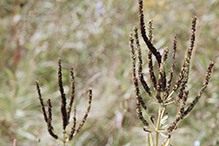 |
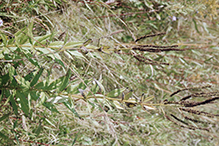 |
|
Infructescence |
||
|
||
|
||
|
Infructescence |
|
|
||
|

Slideshows |
Veronicastrum virginicum 'album' |

|
About
Culver's root, Kransveronika |
Veronicastrum virginicum CULVER'S ROOT |
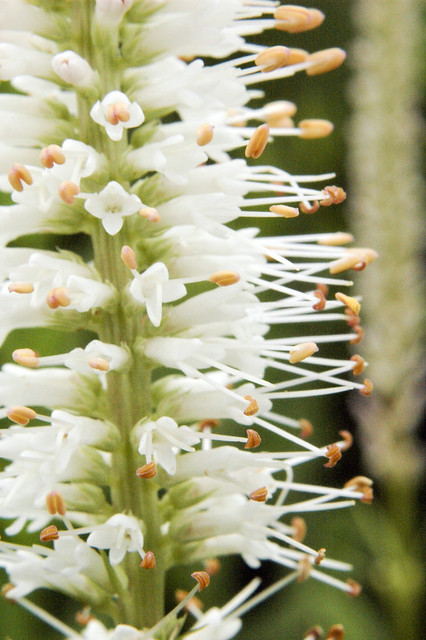
|

Visitor Videos |
||
Share your video of this plant. |
||
This button not working for you? |
||
|
Other Videos |
||
Culver's Root - Veronicastrum virginicum blooming at Ion Exchange |
About
Uploaded on Aug 1, 2011 Earthyman views Culver's Root (Veronicastrum virginicum) in full bloom at Ion Exchange in Northeast Iowa http://www.ionxchange.com |
Honeybee forages on Culver's-root in Marion County, Ohio USA |
About
Uploaded on Sep 4, 2009 Culver's-root, Veronicastrum virginicum, family Scrophulariaceae, is a perennial herb that occurs in prairies. Here at the Larry R. Yoder Prairie on OSU-Marion Campus, a honeybee forages for nectar on its blossoms on July 30, 2009. |
Veronicastrum virginicum, Culvers Root, Kandelaber Ehrenpreis, |
About
Published on Jul 11, 2012 This plant is attractive to bees, butterflies and/or birds Drought-tolerant; suitable for xeriscaping Average Water Needs; Water regularly; do not overwater |

Visitor Sightings |
||
Report a sighting of this plant. |
||
This button not working for you? |
||
| Alfredo Colon 8/2/2019 |
Location: Woodbury, Minnesota |
 |
| Dan W. Andree 7/20/2018 |
Location: Sandpiper Prairie SNA, Norman Co., MN I believe these tall slender spire like flowers are called Culver's Root. |
 |
MinnesotaSeasons.com Sightings |
||
Carpenter St. Croix Valley Nature Center Felton Prairie SNA, Bicentennial Unit John Peter Hoffman Spring Brook Valley WMA Pankratz Memorial Prairie, North Unit Pembina Trail Preserve SNA, Crookston Prairie Unit Pembina Trail Preserve SNA, Pembina Trail Unit Prairie Creek WMA, Koester Prairie Unit Sand Prairie Wildlife Management and Environmental Education Area Two Rivers Aspen Prairie Parkland SNA |

|
Created: 7/16/2004 Last Updated: © MinnesotaSeasons.com. All rights reserved. |
